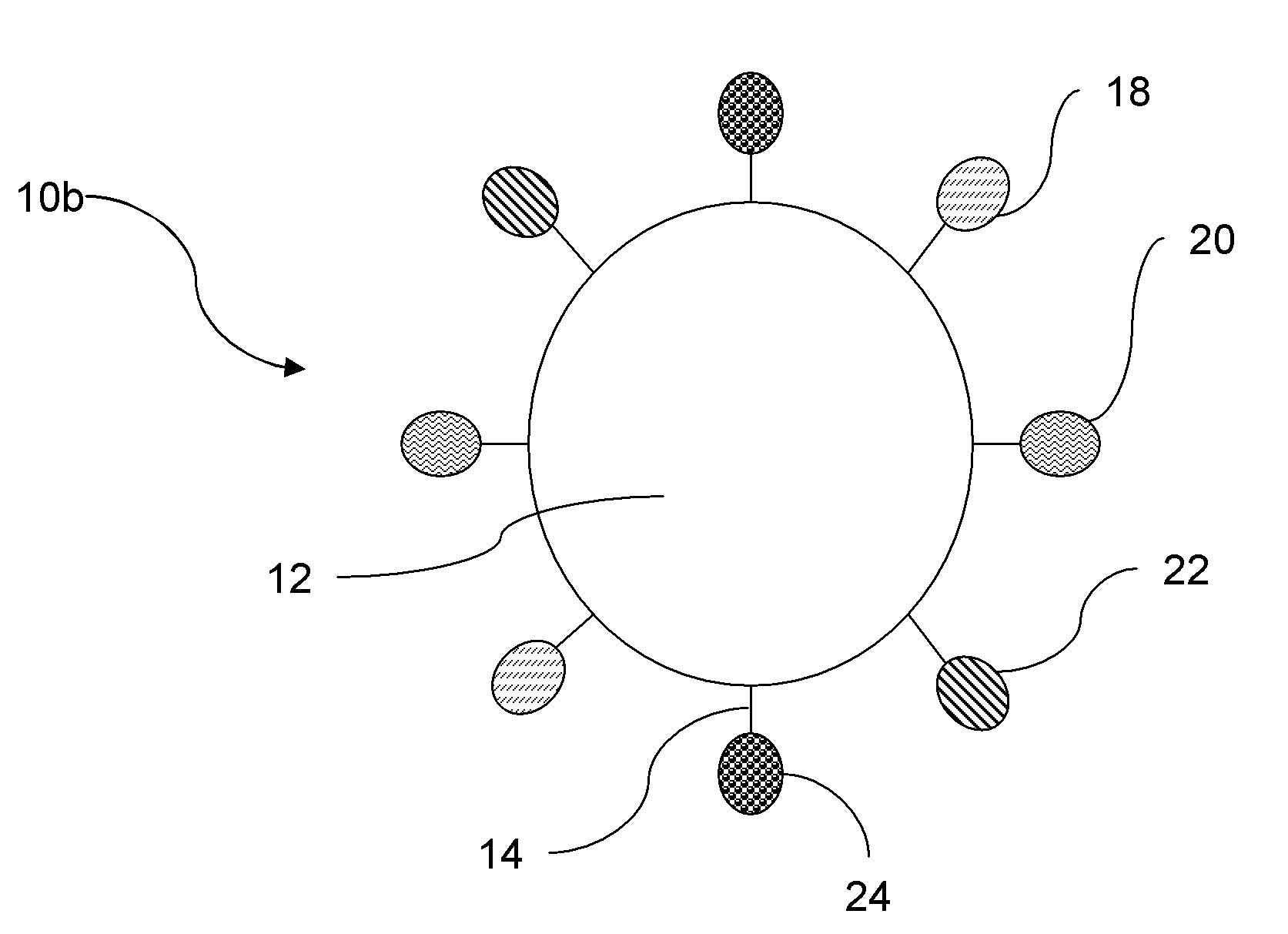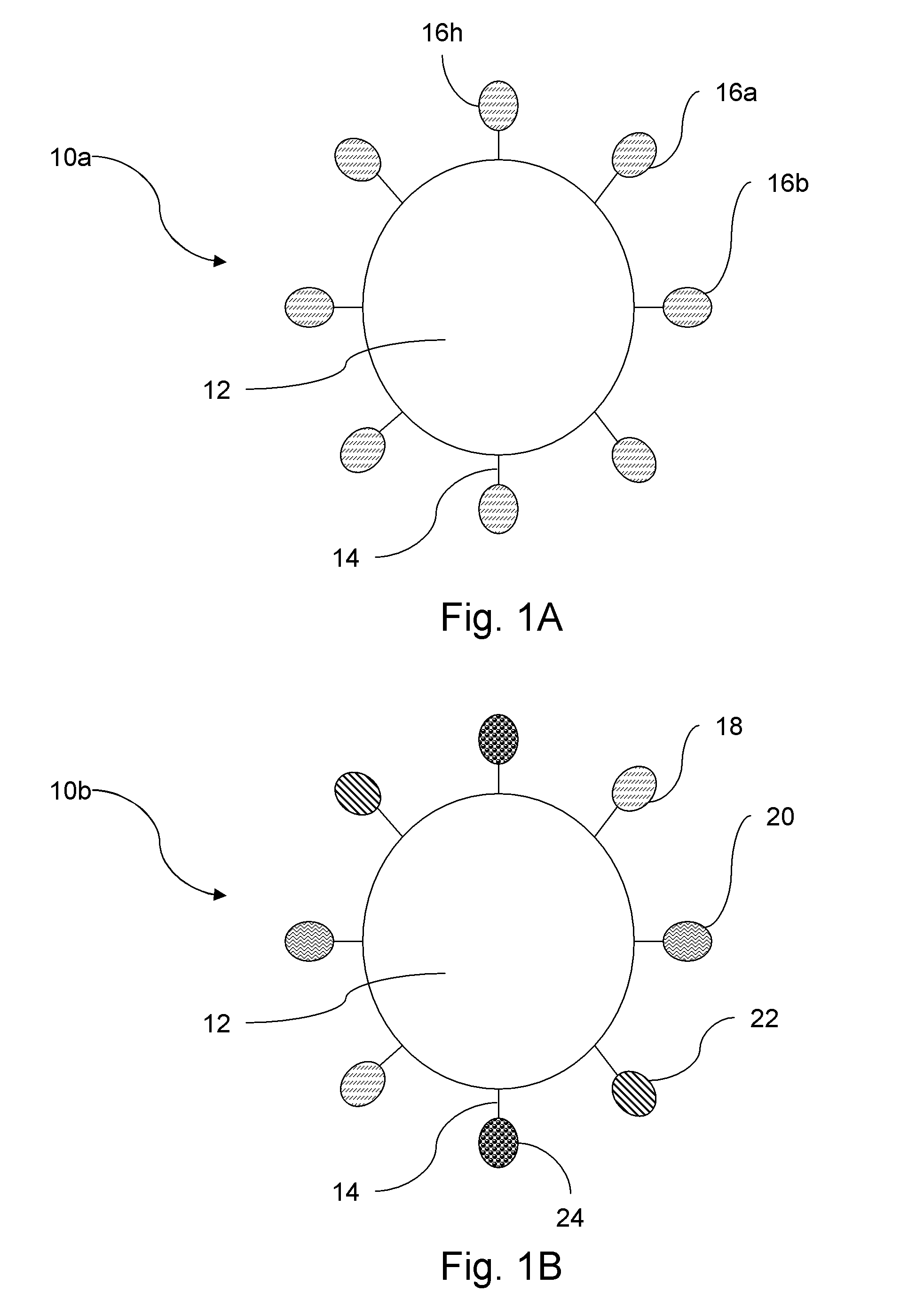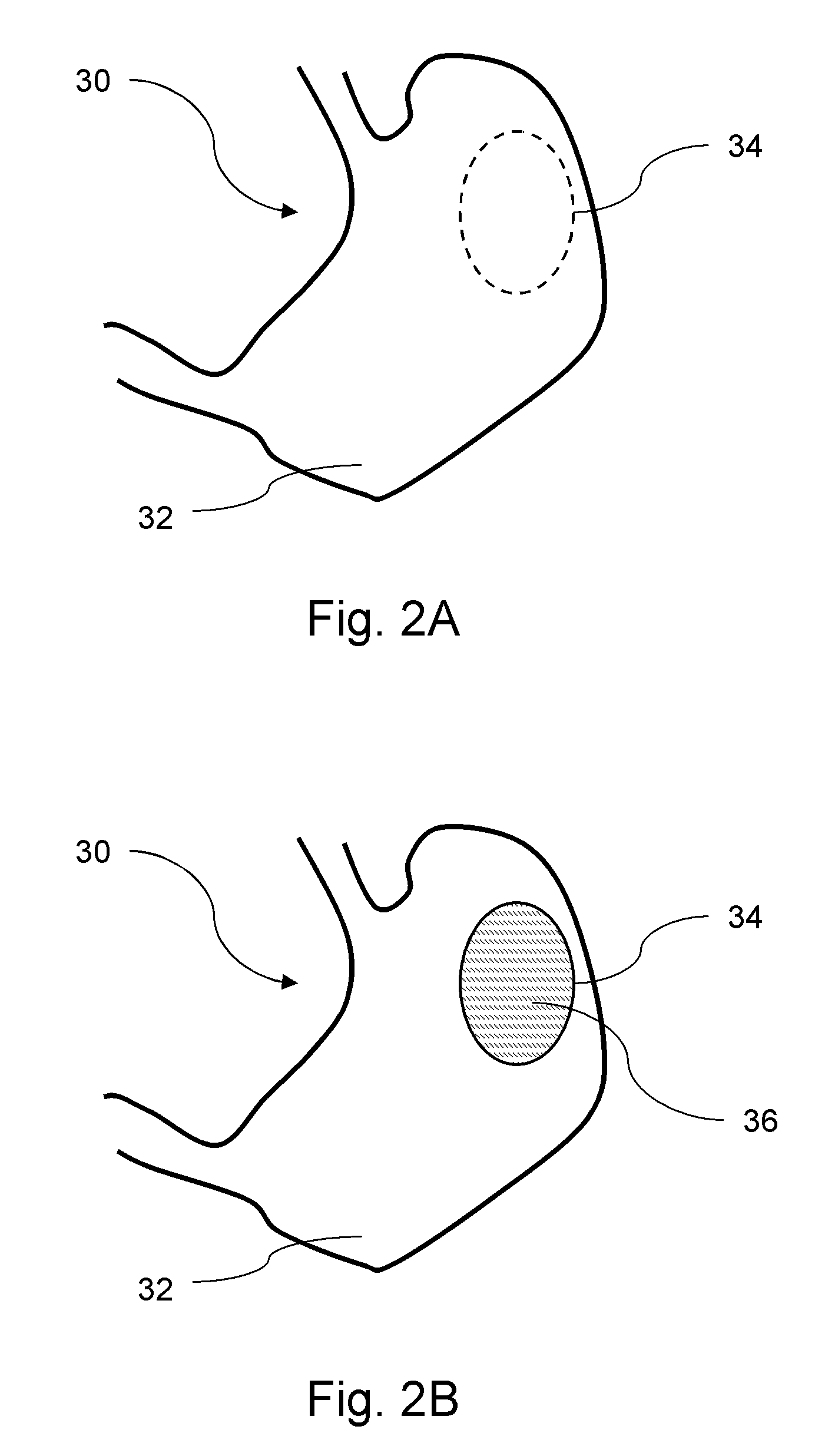Nanotracer for in-situ gastric cancer detection
a gastric cancer and in-situ technology, applied in the direction of diagnostic recording/measuring, ultrasonic/sonic/infrasonic diagnostics, biocide, etc., can solve the problems of low intake of fruits and vegetables, difficult identification of the extent of gastric cancer, and undesirable in the patient's quality of li
- Summary
- Abstract
- Description
- Claims
- Application Information
AI Technical Summary
Benefits of technology
Problems solved by technology
Method used
Image
Examples
Embodiment Construction
[0027]The illustrative embodiments described in the detailed description and claims are not meant to be limiting. Other embodiments may be utilized, and other changes may be made, without departing from the spirit or scope of the subject matter presented here.
I. Introduction
[0028]The illustrated embodiments relate to novel nanotracers for in-situ detection of cancerous gastric tissue and methods for detecting gastric cancer and differentiating healthy tissue from cancerous tissue. The nanotracers are prepared by forming nanoparticles that incorporate a detectable label. A receptor-specific ligand, which is capable of interacting with cellular receptors, is coupled to the nanoparticles.
[0029]Cancerous tissues generally divide more rapidly than healthy tissues, and have, as a result, greater nutritive needs than their healthy counterparts. In addition, cancerous tissues produce disproportionate numbers of ligand receptors that are responsible for binding and transporting certain nutr...
PUM
 Login to view more
Login to view more Abstract
Description
Claims
Application Information
 Login to view more
Login to view more - R&D Engineer
- R&D Manager
- IP Professional
- Industry Leading Data Capabilities
- Powerful AI technology
- Patent DNA Extraction
Browse by: Latest US Patents, China's latest patents, Technical Efficacy Thesaurus, Application Domain, Technology Topic.
© 2024 PatSnap. All rights reserved.Legal|Privacy policy|Modern Slavery Act Transparency Statement|Sitemap



